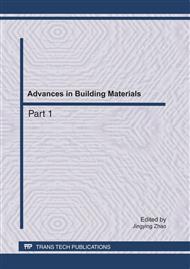
The initiation is the core issue in debris flow study, it’s the basis of debris flow disaster prevention, and the research on transformation of landslide into debris flow is fundamental in debris flow study. Transformation of landslide into debris flow was a new topic which proposed in recent years, although it contained the previous areas of landslide-debris flow, something developed, it was more emphasis on the transformation process of landslide to debris flow. This paper proposed an ideal model from practical disaster, based on Coulomb Particle Flow Theory, we used large-scale finite difference software FLAC3D to analyze. From soil mechanics, to study on excess pore water pressure and the instability mechanism of slope, we got several laws. The results showed that, (a) the maximum excess pore water pressure occurred in the lower part of gravel slope body, with the increase of external load increasing, here would be the first liquefaction area; (b) crushed gravel soil had been largely destroyed when the slope in critical state, and at the same time internal energy of particles increased, cement ability decreased. With the rock sheared, gravitation energy of rock was released, high-speed gravel slope spilled into debris.
You might also be interested in these eBooks
Info:
© 2011 Trans Tech Publications Ltd. All Rights Reserved
[1]
Tian Wanpei, Wang Chenghua, etc.: Zonal Forecast of Rainfall-induced Debris Flow and Landslide. Sichuan: Sichuan Sciences and Technique Press (1994).
Google Scholar
[2]
Kong Jiming, Chen Zefu: Occurrence Conditions and Process Analysis on Fluidization of Valley Type Landslide: Danba. In Journal: WUJNS Vol. 11 (2006), P. 829-834, in Chinese.
DOI: 10.1007/bf02830172
Google Scholar
[3]
Anderson S A, Siter N: Analysis of rainfall-induced debris flows. In Journal: J. Geotech. Eng., ASCE Vol. 121 (1995), P. 544-552.
Google Scholar
[4]
Cui Peng: Studies on condition and mechanism of debris flow initiation by means of experiment. In Journal: Chinese Science Bulletin Vol. 37 (1992), P. 759-763, in Chinese.
Google Scholar
[5]
Iverson R M, Reid M E, Lahusen R G: Debris-flow mobilization from landslides. In Journal: Annu. Rev. Planet. Sci. Vol. 25(1997), P. 85-138.
DOI: 10.1146/annurev.earth.25.1.85
Google Scholar
[6]
Hutchinson J N, Bhandari R K: Undrained loading, a fundamental mechanism of mudslide and other mass movements. In Press: Geotechnique Vol. 21(1971), P. 353-358.
DOI: 10.1680/geot.1971.21.4.353
Google Scholar
[7]
Sassa K: Mechanisms of landslide triggered debris flow [C]/Proceedings of IUFRO Conference (Div. 8). Kyoto: Kluwer Academic Publishing, 1998, P. 471-490.
Google Scholar
[8]
Chen Xiaoqing, Li Yong, Cui Peng: An Overview of Transformation of Landslide into Debris Flow. In Journal: Journal of Mountain Science Vol. 22 (2004), P. 562-567, in Chinese.
Google Scholar
[9]
Dai F C, Lee C F: Analysis of rainstorm-induced slide-debris flows on natural terrain of Lanta Island, Hong Kong. In Journal: Engineering Geology Vol. 51 (1999), P. 279-290.
DOI: 10.1016/s0013-7952(98)00047-7
Google Scholar
[10]
Kong Jiming: Guizhou Guanling Landslide Formation Mechanism and Its Characteristics. In Journal: Journal of Mountain Science Vol. 28 (2010), P. 725-731, in Chinese.
Google Scholar


